Ki. Smart City Ecosystem
Transform lighting infrastructure into an open ecosystem for smarter, more responsive cities
What is Ki.?
Ki. is a next generation IoT platform. It transforms street lighting networks from illumination hardware into an asset for smart cities. Ki. unlocks urban data to reveal unique insights that help improve efficiencies and sustainability.
The UN estimates that 68% of the world’s population will reside in urban hubs by 2050. To create sustainable smart cities, investment in responsive city infrastructure is essential. Our existing lighting infrastructure is the key to unlock the potential of tomorrow’s cities.
With Ki. technology, the connected lamp post becomes a strategic, smart asset with a multitude of functions. Data gathered by the streetlights can be monitored through communication, interaction and evaluation. This enables cities to instantly respond to changing conditions, creating a responsive environment which can improve the life of citizens.
The Ki. Ecosystem
The Ki. ecosystem is made up of 3 main parts – enabling hardware, communications and insights. It is futureproof and developed to work alongside the technology of tomorrow, while also able to integrate seamlessly with existing infrastructure.
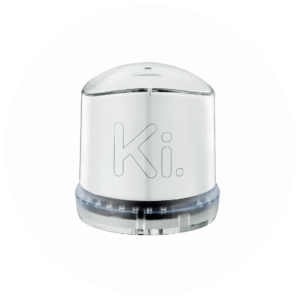
Enabling Hardware
The Ki. Node can be retrofit into existing infrastructure schemes and integrated into new and future designs. It is compatible with a variety of luminaire connectors, including NEMA, conduit and SR sockets, compatible with current lampposts.
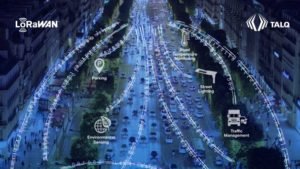
Communications
Connectivity is consistent and optimum, enabling constant capture, always sending and receiving information. Existing infrastructure is transformed into IoT enabled assets via the open protocol, enabled by LoRaWAN. Within the ecosystem, the data flow is bi-directional.
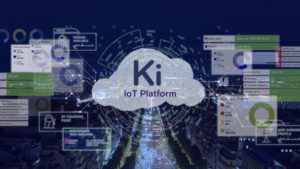
Insights
The continuous two-way transmission via LoRaWAN creates an extensive database of collected data from the city. The Ki. database provides actionable insights. The database can identify regularly occurring events and can therefore enable mitigation of potential problems before impact. This improves the efficiency and safety of urban assets.
Features of Ki.
The features of the Ki. Platform provide control over the whole system. This open approach to smart city management enhances the way we live, work and play. Performance of the smart city is optimised through effective maintenance plans and being informed of events before the occur. Effective data analysis can assess severity of faults, recording performance failure and aiding maintenance checks. Smart cities should approach digital urban assets by:
1. Monitoring & controlling assets and data within city landscape
2. Processing & evaluating the resulting data
3. Taking action upon gathered insights, in real-time
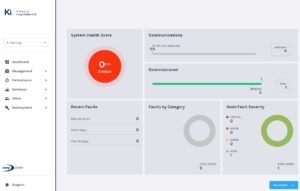
Control & Monitor
This feature enables control of streetlights through a switching profile. Updates and key data about individual nodes are available at a glance. The Ki. Platform included tools such as lamp profiles, a calendar, profile overview and performance dashboard. Information on key performance metrics is provided, such as column temperature, power output, consumption and more.
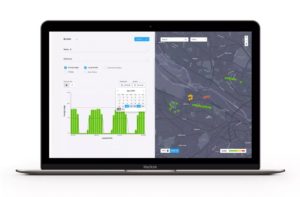
Evaluate & Analyse
The reporting dashboard enables assessment of overall ecosystem performance. It enables evaluation and analysis of a wide range of datasets all in one place. Urban data provides information about real challenges on the street and can assess severity of faults. The reports aid system health maintenance checks and an interactive map provides performance monitoring and overview.
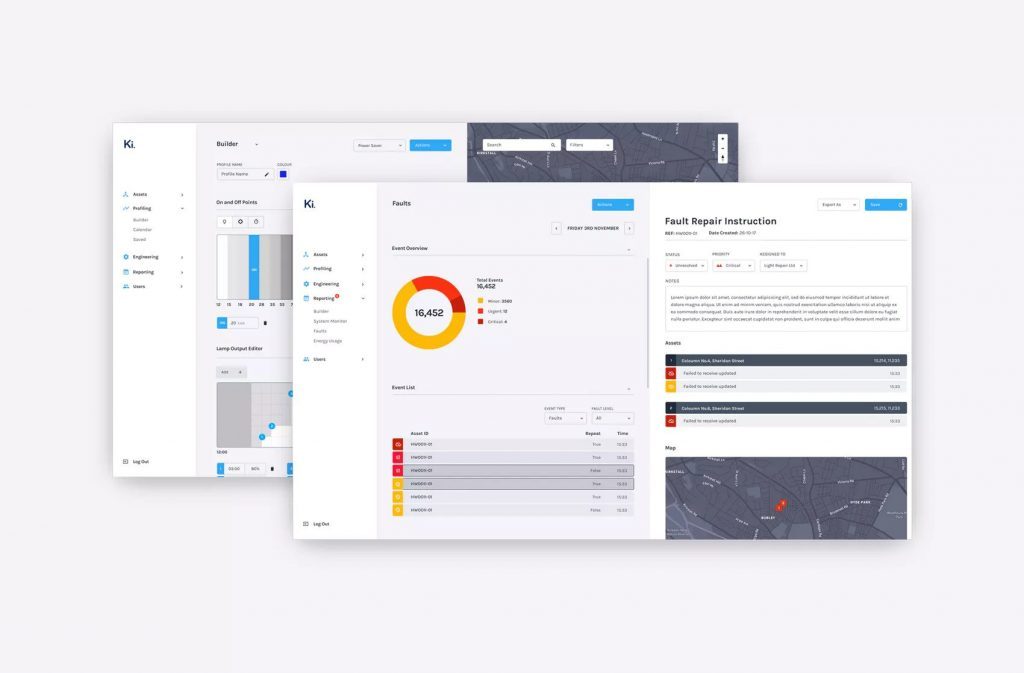
Actionable Insights
These insights develop contextual real-world solutions to improve communities. It enables better informed decisions and improves quality of life through solving unique municipal challenges.
Ki. enables you to take control of urban assets such as streetlights. Each individual street lighting node, or group of nodes, can be controlled via a bespoke or standard switching profile. Key features include:
Lamp output editor: Set and edit lamp profiles for individual nodes or groups with the intuitive editor
Calendar: Aids profile scheduling for individual or single nodes, based on needs of the city
Asset profile overview: Provides key data about individual nodes or devices at a glance
Asset performance dashboard: Gives updates, at a glance, of key performance metrics such as power output, column temperature, consumption and more
Ki. aggregates multiple data sets and generates actionable insights that help to solve unique municipal challenges. Aiding better informed decisions, actionable insights enable the development of contextual real-world solutions that enhance citizen and civic services and improve how communities live, work and play.
Aggregate data for overview of smart city performance
Develop maintenance plans based on performance metrics
Keep informed of events before they happen
Use insights to keep citizens informed of changes to public services
Contextualise unique urban data to inform smart city development and success
Ki.’s reporting dashboard aids you in assessing the overall performance of your ecosystem. With a dedicated fault reporting dashboard, you have the freedom to evaluate and analyse a wide range of datasets from one place, in the context of your smart city. From calculating energy efficiency to assesing fault severity, Ki. unlocks unique urban data keep you better informed about the real challenges on the street, which can be tailored to meet your smart city goals. Capabilities of the dashboard include:
Check asset performance over custom timescales
Assess severity of faults either by count or percentage
Gain an overview of performance in critical time periods and monitor via interactive map
Record recurring performance failures to inform maintenance
Export reports to aid system health maintenance checks
What are the Ki. Platforms?
The Ki. Platforms are designed for your smart city. It enables you to interact with you city remotely, for instant improvements. The dashboard, communications and installation tool serve different purposes for communication, interaction and evaluation of the infrastructure assets. Respond to changing conditions instantly through the Ki. Platforms.

Dashboard
The Ki. dashboard acts as a portal into the Ki.Platform. It provides at a glance information about your smart city applications and key data about individual nodes, providing updates in an instant.

Communications
Communications throughout the Ki. ecosystem are enhanced via an open protocol, enabled by LoRaWAN™. This helps cities become smarter and more responsive by making it easier to transform existing infrastructure into IoT enabled assets, which communicate freely and securely.
Ki. is interoperable with a number of network providers for optimum and consistent connectivity, regardless of scale. This aids the management of data flow within the ecosystem to capture, send and receive information, bi-directionally, at all times.

Installation Tool
The Ki. Installation tool allows those in the field to quickly and accurately deploy street lighting nodes and commission them, simultaneously, in just a few steps. Making the entire process paperless, the app links directly with the Ki. Platform to plot connected streetlights and monitor performance variables in a matter of seconds.
Device provided: to ensure all Ki. Nodes can be commissioned effectively, Lucy Zodion provides a rugged device with the Ki. Installation Tool already installed, as part of the Ki. set-up kit.
Scan and go: with just three steps to follow for complete deployment, the Ki. Installation Tool helps installers scan and go for quick and simple commissioning.
Go paperless: recording all nodes and their co-ordinates digitally not only reduces installation times, it improves accuracy for seamless smart city integration in seconds.
